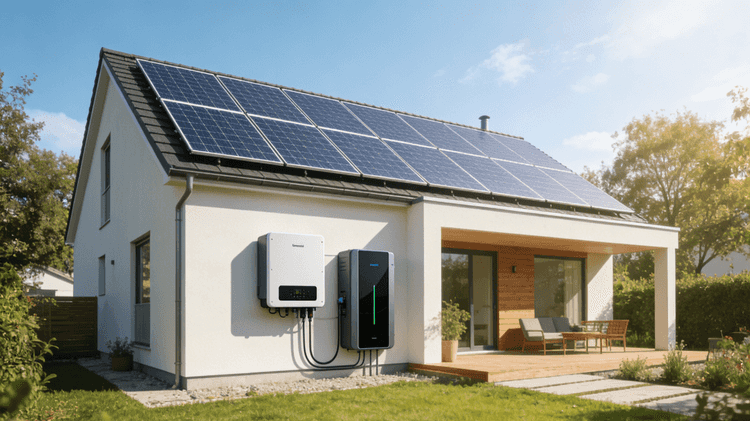Title: How Long Does a Home Energy Storage System Last? Understanding the Lifespan and Durability of Residential Energy Storage Smart Storage Solutions
Introduction:
As the demand for renewable energy grows, Home Energy Storage Systems have gained popularity as a means to capture and store excess energy generated by renewable sources like solar panels. When considering the installation of a home energy storage system, it is essential to understand its lifespan and durability. In this article, we will explore the factors that influence the longevity of home energy storage systems, their typical lifespan, and the importance of proper maintenance to ensure optimal performance and longevity.
1. Factors Affecting Home Energy Storage System Lifespan:
1.1. Battery Technology:
The type of battery technology used in a home energy storage system has a significant impact on its lifespan. Lithium-ion (Li-ion) batteries, such as lithium iron phosphate (LiFePO4) and lithium nickel manganese cobalt oxide (NMC), are commonly used due to their high energy density, efficiency, and longevity. These batteries can typically last for 10 to 15 years or even longer, depending on usage patterns and maintenance.
1.2. Depth of Discharge (DoD):
The depth of discharge refers to the percentage of a battery's total capacity that is utilized during each discharge cycle. Shallow cycling, where the battery is not fully discharged, can help prolong its lifespan. Home energy storage systems that are regularly discharged to a high DoD may experience a shorter overall lifespan. It is advisable to consult the manufacturer's recommendations regarding the optimal DoD for the specific battery technology used.
1.3. Temperature Management:
Temperature plays a crucial role in the performance and longevity of home energy storage systems. High temperatures can accelerate battery degradation, while low temperatures can affect their efficiency. Proper temperature management, through active cooling or heating systems, can help maintain optimal operating conditions and extend the lifespan of the battery.
1.4. Cycling Frequency:
The number of charge and discharge cycles a home energy storage system undergoes can impact its lifespan. Systems that experience frequent cycling may have a shorter overall lifespan compared to those with less frequent cycling. This is an important consideration for homeowners who rely heavily on their Home Energy Storage System or live in areas with high demand for stored energy.

2. Typical Lifespan of Home Energy Storage Systems:
The typical lifespan of a home energy storage system depends on various factors, as mentioned above. On average, a well-maintained and properly used Li-ion battery-based system can last between 10 to 15 years. However, advancements in battery technology and improvements in system design and components may lead to longer lifespans in the future.
It is important to note that the lifespan of the battery does not necessarily determine the lifespan of the entire energy storage system. Other components, such as inverters and control systems, may have different lifespans and may require replacement or upgrades before the battery reaches the end of its useful life.
3. Maintenance and Care for Longevity:
Proper maintenance and care are crucial for maximizing the lifespan and performance of home energy storage systems:
3.1. Regular Inspections:
Homeowners should conduct regular inspections of the Home Energy Storage System to identify any signs of damage, wear, or malfunction. This includes checking battery performance, monitoring temperature levels, and ensuring proper ventilation.
3.2. Firmware and Software Updates:
Keeping the system's firmware and software up to date is essential for optimal performance and compatibility with evolving technologies. Manufacturers often release updates that address performance improvements, bug fixes, and safety enhancements.
3.3. System Calibration:
Calibrating the energy storage system periodically can help maintain accurate state-of-charge readings and prevent capacity degradation. This calibration process may involve fully charging and discharging the battery to recalibrate its internal monitoring systems.
3.4. Professional Servicing:
Engaging a professional technician or an authorized service provider for regular maintenance and servicing is advisable. They can perform in-depth inspections, identify potential issues, and provide necessary repairs or replacements when needed.
4. Warranty Considerations:
When purchasing a home energy storage system, it is important to review the manufacturer's warranty. Manufacturers typically provide warranties that cover the battery and other components for a specified period, often ranging from 5 to 10 years. Understanding the warranty terms and conditions, including coverage, limitations, and any required maintenance, will help homeowners make informed decisions and protect their investment.
Conclusion:
Home energy storage systems are valuable assets that allow homeowners to maximize the benefits of renewable energy generation and increase energy independence. While the lifespan of a home energy storage system is influenced by various factors, including battery technology, depth of discharge, temperature management, and cycling frequency, proper maintenance and care play a pivotal role in ensuring optimal performance and longevity. By following manufacturer recommendations, conducting regular inspections, and engaging professional servicing when needed, homeowners can extend the lifespan of their home energy storage systems and continue to enjoy the benefits of sustainable and efficient energy storage for many years.



